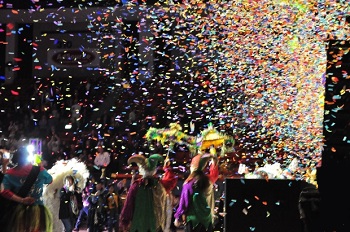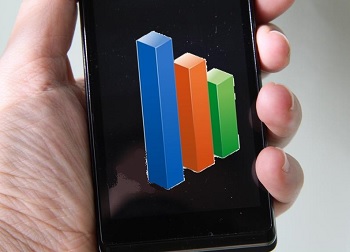Whether you’re headed to Mardi Gras or another festival or attraction, wearables can help find children in a crowd.
Although wearable technology has been primarily focused on issues such as health and fitness tracking as well as call and text alerts, it is now being speculated that these devices might also become very popular among parents who want to make sure their kids can find their way back again if they should wander off in a crowd.
This is good news for parents who will be bringing little ones to the Mardi Gras celebrations, this year.
That said, wearable technology’s benefit for helping scared and lost children to find their parents, once again, is hardly limited to the Carnival season. As events start to become more common over the spring and summer, the need to keep track of kids and to give them a way to be safely returned to parents will only become more important. In this way, parents will not only be able to keep track of event locations, concert schedules, parade routes, and festival maps, but they’ll also bring young ones back to parents again.
This use for wearable technology will be important for helping families to keep calm and to stick together.
 While many events – including Mardi Gras – are designed to be exceptionally family friendly, when such a large number of people are all milling about in the same location, it takes only a split second before family members can become separated from each other. Moreover, it takes only a few feet of distance before another person can become impossible to see from among all the rest of the people in the crowd, particularly with so many other distracting, colorful and exciting things going on all around. Parents are now using wearables to make it possible for little ones to send an alert to the smartphones of their parents when they’re lost or scared, without having to find a phone of their own.
While many events – including Mardi Gras – are designed to be exceptionally family friendly, when such a large number of people are all milling about in the same location, it takes only a split second before family members can become separated from each other. Moreover, it takes only a few feet of distance before another person can become impossible to see from among all the rest of the people in the crowd, particularly with so many other distracting, colorful and exciting things going on all around. Parents are now using wearables to make it possible for little ones to send an alert to the smartphones of their parents when they’re lost or scared, without having to find a phone of their own.
This is being accomplished through gadgets such as the GizmoPal 2, which is made by LG and that runs on the Verizon network. It employs GPS and wearable technology that will allow children press a button to access two-way communication with their parents.
Predictions with regards to who would win the Spanish, Israeli and U.K. elections were way off.
During the most recent elections in the United Kingdom, Spain and Israel, pollsters called the outcomes quite firmly and yet they were incredibly wrong and the belief is that the same mistakes may be headed to the U.S. due to mobile technology and the lack of understanding of the Millennial lifestyle.
Still, American pollsters are trying their hardest to avoid those mistakes during the 2016 campaign.
According to the president of the American Association for Public Opinion Research, Mollyann Brodie, who is also responsible for overseeing polling at the Kaiser Family Foundation, “There are a lot of people working hard to make sure similar mis-steps don’t happen here.” However, she and other experts in the field – agree that the pollsters across the United States are currently up against some extremely complicated challenges with regards to their methodologies. These challenges are about as tough as they’ve been since mobile technology first hit the mainstream.
Millennials use their mobile technology to screen calls, throwing off the balance of understanding of voters.
 People in the Millennial generation don’t feel the urgency to pick up the phone when it rings, as has been the case in previous generations. When their mobile technology device rings, they use caller-ID to see who is on the other end, and they feel no obligation to pick up when it’s someone they don’t know, don’t want to talk to, or when they’re simply too busy to pick up.
People in the Millennial generation don’t feel the urgency to pick up the phone when it rings, as has been the case in previous generations. When their mobile technology device rings, they use caller-ID to see who is on the other end, and they feel no obligation to pick up when it’s someone they don’t know, don’t want to talk to, or when they’re simply too busy to pick up.
This, combined with the declining accuracy of the “likely voter” models and swindling budgets have caused sample sizes to shrink dramatically. For this reason, the polls, this year, are facing considerable criticism. There is considerable risk that the predictions in the United States are as inaccurate as they have been elsewhere around the world, and that pollsters could find themselves feeling rather red-faced when the true outcomes are revealed.
A prime example of this challenge occurred when the chief strategist for Hillary Clinton, Joel Beneson tweeted “Seriously CNN?” in response to a poll result the network released, which showed the former secretary of state falling behind Bernie Sanders in Iowa (43-51). The reason for the lack of faith in the figures is that it was discovered that the sample used by CNN was made up primarily of men, and consisted of only slightly over 300 people – which is barely representative of a general population.
 While many events – including Mardi Gras – are designed to be exceptionally family friendly, when such a large number of people are all milling about in the same location, it takes only a split second before family members can become separated from each other. Moreover, it takes only a few feet of distance before another person can become impossible to see from among all the rest of the people in the crowd, particularly with so many other distracting, colorful and exciting things going on all around. Parents are now using wearables to make it possible for little ones to send an alert to the smartphones of their parents when they’re lost or scared, without having to find a phone of their own.
While many events – including Mardi Gras – are designed to be exceptionally family friendly, when such a large number of people are all milling about in the same location, it takes only a split second before family members can become separated from each other. Moreover, it takes only a few feet of distance before another person can become impossible to see from among all the rest of the people in the crowd, particularly with so many other distracting, colorful and exciting things going on all around. Parents are now using wearables to make it possible for little ones to send an alert to the smartphones of their parents when they’re lost or scared, without having to find a phone of their own.
 People in the
People in the 